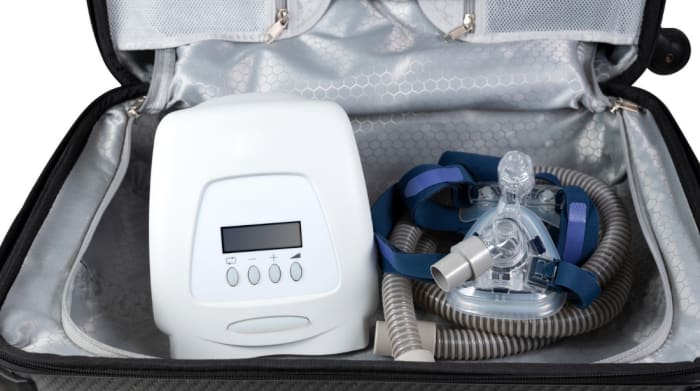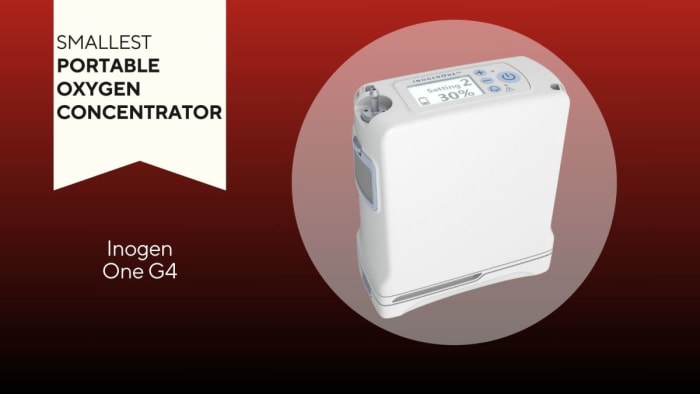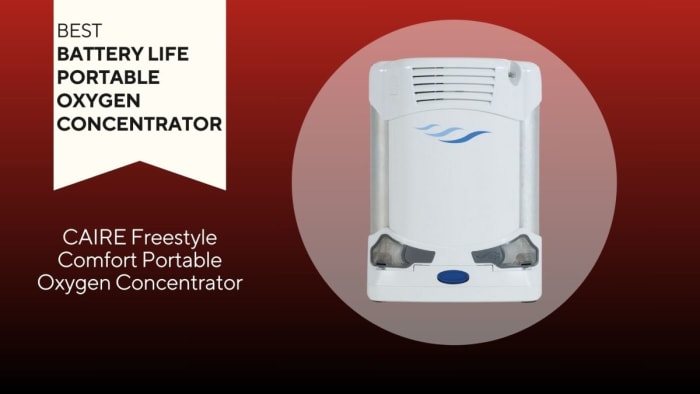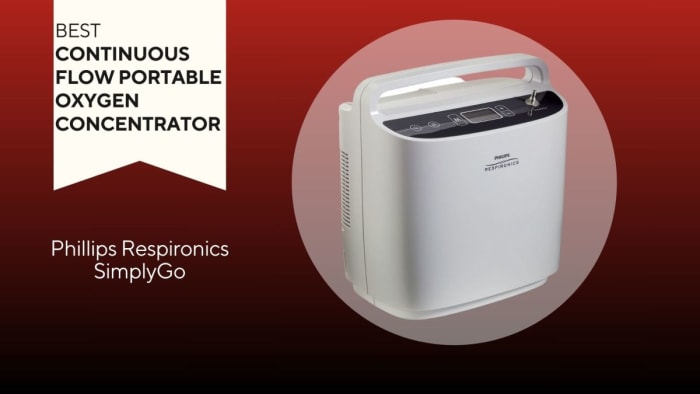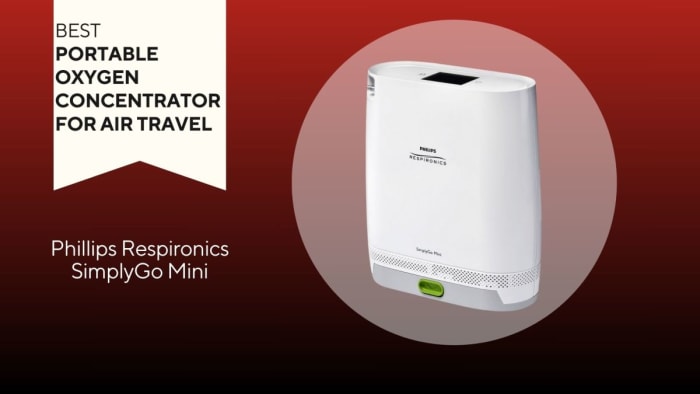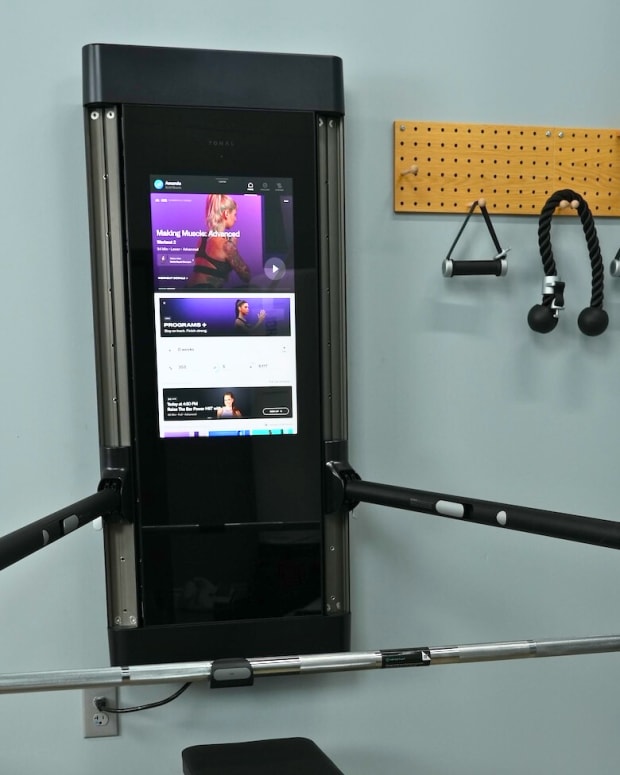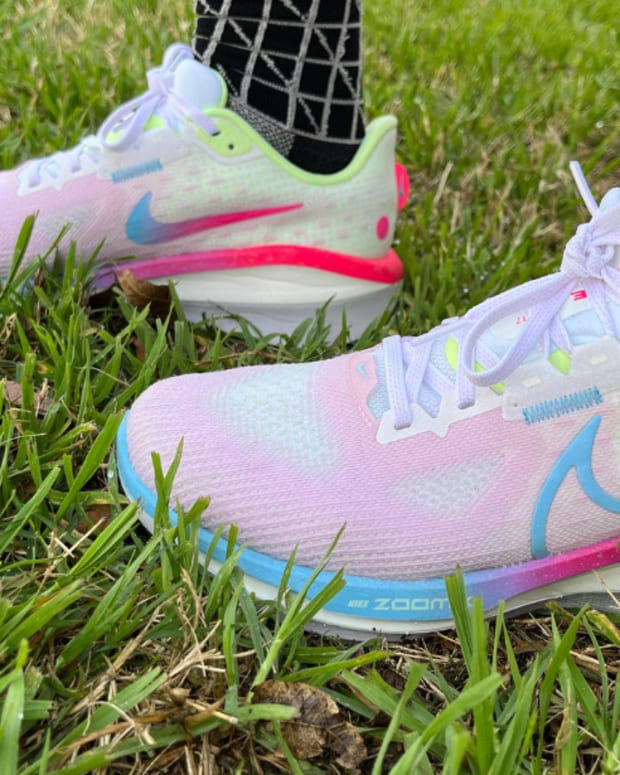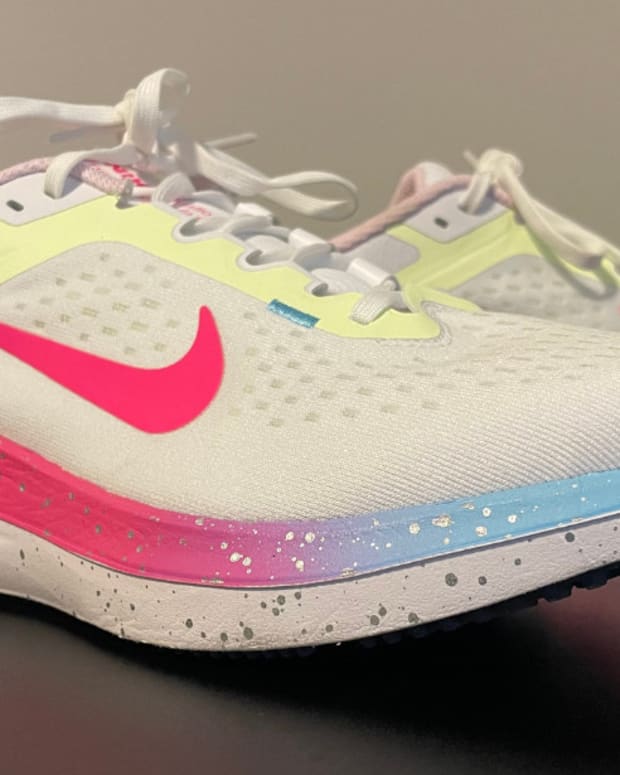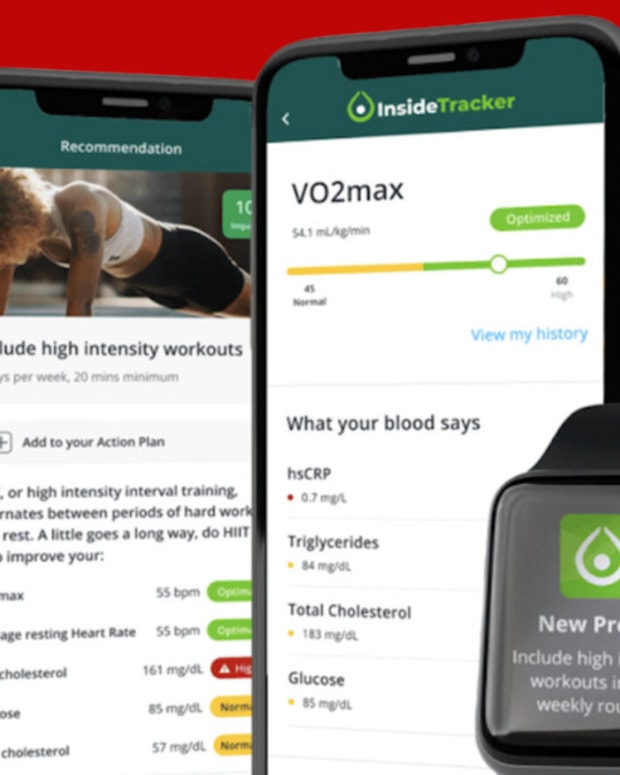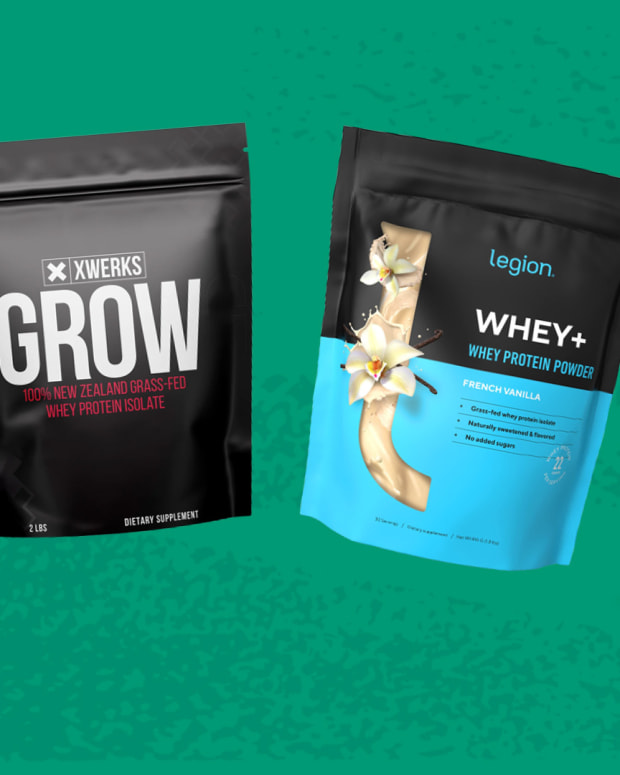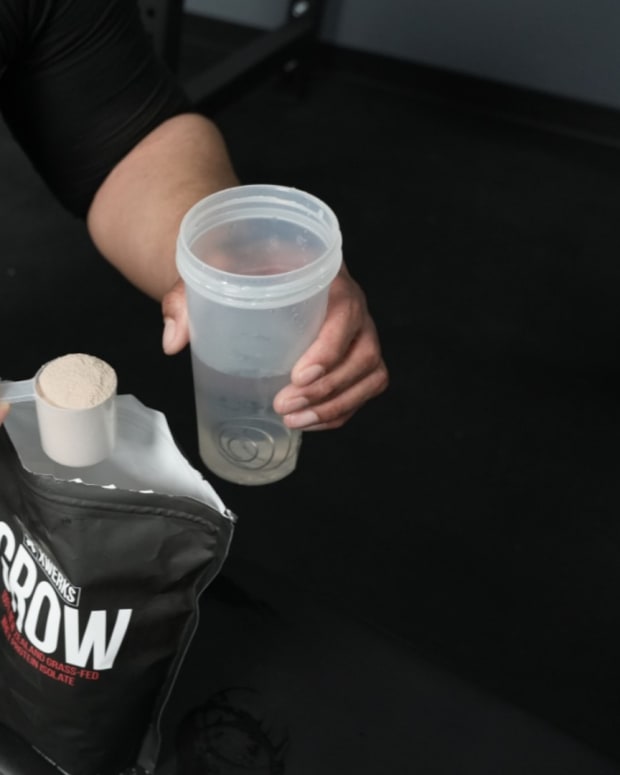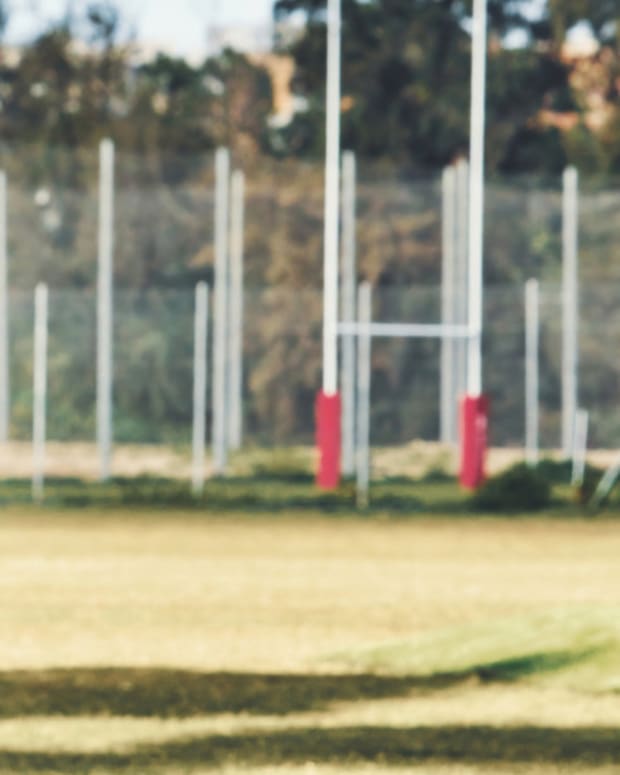The products featured in this article have been independently reviewed. When you buy something through the retail links on this page, we may earn commission at no cost to you, the reader. Sports Illustrated editorial staff are not involved in the creation of this content. Learn more here.
Oxygen is essential for our bodies to function, but sometimes, when we’re sick or have a health issue like asthma, lung cancer, COVID-19 or the flu, our oxygen levels can drop. If you suffer from a condition such as chronic lung disease (COPD), emphysema, heart disease or cystic fibrosis, your doctor may prescribe an oxygen concentrator to support your breathing.
For people who require supplemental oxygen and also lead active lifestyles, a portable oxygen concentrator (POC) can be life-changing, not only for health support, but for a sense of freedom as well. Supplemental oxygen therapy provided by POCs can help improve exercise tolerance, alleviate symptoms such as shortness of breath and enhance the overall quality of life (i.e activity and independence).
We rounded up our picks for the best portable oxygen concentrators by considering factors like the product’s weight and size, consumer ratings, battery life, special features and the device’s ease of use. We favored POCs with simple user functionality, sleek, lightweight designs and warranty guarantees. In this article, we present four of the best portable oxygen concentrators on the market in 2024, all of which are FDA-approved (and require a prescription), as well as FAA-approved for air travel.
This content is meant to be informative, but should not be taken as medical advice. It is not intended for use as diagnosis, prevention or treatment of health problems. Always speak with your doctor before starting any new supplement or exercise regimen.
Our Picks for Best Portable Oxygen Concentrator of 2024:
- Smallest Portable Oxygen Concentrator: Inogen One G4
- Best Battery Life Portable Oxygen Concentrator: CAIRE Freestyle Comfort Portable Concentrator
- Best Continuous Flow Portable Oxygen Concentrator: Philips Respironics SimplyGo
- Best Portable Oxygen Concentrator for Air Travel: Philips Respironics SimplyGo Mini
Smallest Portable Oxygen Concentrator: Inogen One G4
Key features and specs:
- Weight: 2.8 pounds
- Dimensions: 5.91 inches W x 2.68 inches L x 7.2 inches H
- Delivery/flow-type: Pulse dose
- Warranty: 3-year standard warranty
- Noise level: 40 decibels
- Max oxygen output: Unspecified
- Battery Life: 2.25 hours
No bigger than your average handbag, the Inogen One G4 is one of the smallest and lightest portable oxygen concentrators on the market. If you’re already familiar with Inogen’s line of POC units, note that the G4 is half the size of its predecessor, the Inogen One G3.
We think the Inogen One G4 is one of the best portable oxygen machines because in addition to being lightweight and highly portable, it provides excellent user functionality. The unit’s easy-to-use interface enables users to access their oxygen therapy quickly and without hassle. Plus, the G4 is compatible with the Inogen Connect mobile app, allowing users to monitor their device closely and check on critical factors such as the battery life percentage, column status and cannula life, among others.
Additionally, the One G4 is powered by Inogen’s pulse-dose-based Intelligent Delivery Technology, which automatically adjusts the user’s pulse flow to their breathing rate.
With a 4.5/5-star rating on Oxygenconcentratorstore.com, the Inogen portable oxygen concentrator is certainly consumer-approved, but not without criticism. Typically, the negative reviews for the G4 point to the four-cell battery’s relatively short battery life and the unit’s limited flow settings. Still, most reviewers praise the device for its lightweight, unobtrusive design and simple usability.
One customer writes, “I am on oxygen 24/7. With the Inogen One I am able to leave my house for doctor's appointments plus shopping. The five-hour rechargeable battery is great as I can do my tasks in one outing. And while we drive to our appointments, the Inogen One is plugged into the car's 12vdc accessory without having to use the battery.”
The starter package comes with the Inogen G4 unit, single battery, AC power supply, DC power cable, carry bag, cannula and manual.
What we like:
- Small and lightweight
- Runs quietly
- FAA-approved for air travel
What to consider:
- No continuous flow setting
- Four cell battery has a relatively short battery life (up to two hours and 40 minutes)
Best Battery Life Portable Oxygen Concentrator: CAIRE Freestyle Comfort Portable Concentrator
Key features and specs:
- Weight: 5 pounds
- Dimensions: 7.3 inches W x 3.1 inches L x 10 inches H
- Delivery/flow-type: Pulse dose
- Warranty: 3-year manufacturer warranty that covers the unit and the sieve beds; one-year warranty for the battery and power supplies
- Noise level: 39 decibels at a setting of 2 (as loud as a refrigerator humming)
- Max oxygen output: 1,050 mL/min
- Battery life: 4 hours
A long-lasting battery is paramount for on-the-go oxygen users who frequently find themselves in situations where they can’t access a power outlet. If this describes you, consider the Freestyle Comfort from CAIRE.
The Freestyle Comfort is CAIRE’s newest addition of wearable portable oxygen concentrators. Using the device’s 16-cell rechargeable battery, users get up to 16 hours of power per charge on setting one (and eight hours with the smaller eight-cell battery).
In addition to a long-lasting battery, we consider the CAIRE oxygen concentrator to be one of the best portable oxygen machines on the market because it has an ergonomic design. Whereas many oxygen systems are quite boxy and cumbersome, the Freestyle Comfort has a rounded, curved frame that rests comfortably against the body when worn. And with the included non-slip padded shoulder strap, users can enjoy hours of hands-free oxygen therapy throughout the day.
Additionally, the Freestyle Comfort is very user-friendly and features a simple one-touch operation. And while the user interface is simple, the technology powering the Freestyle Comfort is not. The device uses CAIRE's proprietary UltraSense software—a smart oxygen delivery technology that detects the user’s breathing rate and allows the device to adjust and deliver the user’s prescribed pulse dose automatically.
At the time of writing, the Freestyle Comfort has a 4.8/5-star rating on Oxygenconcentratorstore.com, with many reviewers commending the unit for its ease of use, long battery life and sleek design. One review reads, “I had to purchase a portable oxygen concentrator since my old one broke…I love my new Caire Freestyle Comfort, feels light in weight and is quieter when running. It’s so easy to carry and just go!”
The complete package includes the Freestyle Comfort unit, eight-cell battery (upgradeable option for the 16-cell battery), carrying bag, AC power supply, DC power supply, nasal cannula and user manual.
What we like:
- Lightweight and wearable
- Runs quietly compared to competing units
- Simple user functionality
- FAA-approved for air travel
What to consider:
- Can take up to six hours to fully charge the 16-cell battery (and 3.5 hours for the eight-cell)
- No continuous flow setting
Best Continuous Flow Portable Oxygen Concentrator: Philips Respironics SimplyGo
Key features and specs:
- Weight: 10 pounds
- Dimensions: 11.5 inches W x 6 inches L x 10 inches H
- Delivery/flow-type: Pulse dose and continuous flow options
- Warranty: 3-year manufacturer’s warranty on unit, 90-day warranty on accessories
- Noise level: 43 decibels at a setting of 2 (as loud as a refrigerator humming)
- Max oxygen output: 2,000 ml/min
- Battery life: 3 hours
Lightweight, compact and durable, the Philips Respironics SimplyGo takes the top spot on our list as the best continuous flow portable oxygen concentrator. But it also has pulse dose settings, making it a solid choice for many people who require supplemental oxygen while on the go.
The SimplyGo delivers oxygen at a maximum rate of 2 LPM (liters per minute) on the continuous flow setting and includes seven different pulse dose settings. Plus, it has a sleep mode setting for individuals who need oxygen therapy at night. According to the manufacturer, the unit’s oxygen purity runs between 87 and 96 percent at all continuous and pulse flow settings.
Weighing only 10 pounds, the Philips Respironics SimplyGo is one of the lightest continuous-flow POCs you’ll find on the market. What’s more, it comes with a foldable mobile carrying cart and a carrying case to make transporting your device even easier.
On OxygenConcentratorStore.com, SimplyGo has earned a 4.6/5 stars. Many reviewers appreciate the unit’s intuitive, user-friendly screen, noting that the device is much easier to operate than other POCs they’ve used in the past. At the same time, there are a handful of customers who say they aren’t satisfied with the unit’s battery life, which holds charge for up to 3.4 hours on pulse dose settings, and 2.9 hours with continuous flow output.
One customer writes, “I was so happy and surprised to get this portable oxygen concentrator. My insurance through Medicare did get it for me. It works great and now I can go out and not be confined inside my home. I only wish the battery lasted a little longer. Anyone looking to purchase one, this SimplyGo is perfect and low maintenance.”
Along with the SimplyGo unit, the complete package includes a standard battery, AC power supply, AC cable, DC charger, custom carrying case, shoulder strap and handle strap, mobile cart, accessory bag, cannula and user manual.
When it comes to manufacturing oxygen systems, Philips Respironics places special focus on portability, reliability and ease of use, and the SimplyGo appears to live up to these standards.
What we like:
- Easy to use
- Lightweight and very transportable
- Multiple oxygen flow settings
- FAA-approved for air travel
What to consider:
- Some reviewers commented that the battery life is too short
- A handful of reviewers said the unit is loud on settings higher than two
Best Portable Oxygen Concentrator for Air Travel: Philips Respironics SimplyGo Mini
Key features and specs:
- Weight: 5 pounds (6 pounds w/ extended battery)
- Dimensions: 8.3 inches W x 3.6 inches L x 9.4 inches H
- Delivery/flow-type: Pulse dose
- Warranty: 3-year manufacturer’s warranty on unit, 90-day warranty on accessories
- Noise level: ≤46 decibels (as loud as a refrigerator humming)
- Max oxygen output: 1,000 mL/min
- Battery life: 4.5 Hours (Standard Battery), 9 Hours (Extended Battery)
If you’re looking for a portable oxygen concentrator for travel, especially to take on an airplane, consider the Philips Respironics SimplyGo Mini. While every POC unit on our list is FAA-approved for air travel, we believe the SimplyGo Mini has several distinguishing features that make it the best for in-flight use.
To start, the SimplyGo Mini is extremely lightweight, weighing only five pounds with the standard battery (and six pounds if you opt for the extended battery). To date, the SimplyGo Mini is the smallest and lightest portable oxygen concentrator that Philips Respironics has developed.
The unit’s small frame and sleek design are perfectly suited for the tight confines of an aircraft or railcar cabin. While traveling by train or plane, users report that they are able to rest the SimplyGo Mini comfortably on their lap or place the unit under the seat in front of them without hassle.
What’s more, the SimplyGo Mini is rugged due to its impact-resistant design. According to the manufacturer, the SimplyGo Mini has passed rigorous durability tests and can withstand extreme vibrations, temperatures and impact. As a result, jet setters and users with active lifestyles can take their SimplyGo Mini with them on every excursion without worry of damaging their devices. And while the SimplyGo Mini itself isn’t waterproof, it can be purchased with a water-resistant backpack to keep your device and accessories protected from the elements, accidental spills and other travel mishaps.
Additionally, the SimplyGo Mini is designed to be operable in altitudes of up to 10,000 feet, as well as atmospheric pressures between 700 and 1010 hPa.
You’ll notice that the SimplyGo Mini has half the maximum oxygen output capacity of the SimplyGo, at one LPM. But on the upside, the SimplyGo Mini’s battery life is nearly three times longer than that of its larger counterpart, lasting up to 9 hours with the extended battery, and up to 4.5 hours with the standard battery.
On Oxygenconcentratorstore.com, the SimplyGo Mini has earned a 4.6/5 stars In addition to the SimplyGo Mini unit, the complete package includes a standard battery, AC power supply, AC cable, DC power supply, custom carrying case and shoulder strap, accessory bag, handle strap, cannula and user manual.
What we like:
- Small and easy to carry
- Intuitive LCD touchscreen interface
- FAA-approved for air travel
What to consider:
- Does not include a wheelable carrying cart
- No continuous flow setting
What Is a Portable Oxygen Concentrator?
A portable oxygen concentrator (POC) is a small portable oxygen machine. The lightweight, battery-operated, tankless oxygen machine supplies concentrated oxygen to people who need oxygen therapy. They are similar to home oxygen concentrators, but are lighter in weight and easier to transport.
How Does a Portable Oxygen Concentrator Work?
Portable oxygen concentrators work by taking in ambient air, which is predominantly composed of nitrogen, and utilizing filters and molecular sieve beds to extract and concentrate the oxygen. This differs from a portable oxygen compressor which uses liquid oxygen. The concentrated oxygen is then delivered to the user through a nasal cannula or mask, allowing them to breathe in higher levels of oxygen.
Portable oxygen concentrators deliver oxygen in two primary ways: pulse dose (PD) oxygen delivery or continuous flow (CF) oxygen delivery. Pulse dose oxygen therapy is based on the user’s breath rate and calibrated in milliliters per breath, allowing for a customizable form of oxygen therapy. Continuous flow oxygen therapy, on the other hand, is indiscriminate of the users breath rate and measured in milliliters or liters per minute (mL/min, L/min).
People with normal, healthy lungs can breathe fine with 21 percent oxygen concentration, which is the typical concentration of oxygen in ambient air. But individuals with respiratory conditions and lung diseases, such as chronic obstructive pulmonary disease (COPD), COVID-19 or asthma often find it difficult to breathe normal air, especially while engaging in physical activities, and therefore require a more concentrated oxygen supply (i.e. oxygen therapy). Depending on the severity of the disease, some people need as high as 99.5 percent oxygen concentration, which is the standard for certain medical-use oxygen systems.
Precautions When Using A Portable Oxygen Concentrator
The precautions of owning and operating a portable oxygen concentrator include:
- Regular maintenance and cleaning as recommended by the manufacturer to ensure optimal functioning.
- Properly securing the device during transportation to prevent damage.
- Following safety guidelines when using the device around open flames or flammable materials.
- Understanding the device's battery life and planning accordingly for uninterrupted oxygen supply.
- Being aware of any potential allergic reactions or skin irritations from the nasal cannula or mask, and contacting a healthcare provider if such issues arise.
How to Choose the Best Portable Oxygen Concentrator for You
It is important to note that not all portable oxygen concentrators are made equally. An over-the-counter (OTC) portable oxygen concentrator that can be purchased online without a prescription may not work as well for your oxygen needs as an FDA-approved portable oxygen concentrator, which typically requires a prescription from a health professional. Depending on the severity of your condition, you may need an FDA-approved POC, a medical-grade oxygen tank or some other oxygen system that provides medical-use oxygen. Before you purchase a POC, talk to your healthcare provider to determine if you need a unit with continuous flow or pulse dose delivery. They can also help you understand which flow setting level is best for your needs as it relates to your activity level.
Portable Oxygen Concentrator Price
Based on our research, portable oxygen concentrators range in price from $600 to more than $3,000. Additional batteries add to the overall cost of your portable oxygen concentrator. The average cost of the portable oxygen concentrators in our round up is $2,270 with basic batteries and $2,484 with upgraded batteries.
Does insurance cover portable oxygen concentrator cost?
Portable oxygen concentrators require a prescription from your doctor. Therefore, some insurance providers will cover the cost of a portable oxygen concentrator and other oxygen equipment as long as certain qualifications are met. Reach out to your insurance provider for additional guidance.
How much does Medicare pay for portable oxygen concentrators?
Medicare may cover the cost of a portable oxygen concentrator rental. However, this is only if the device is prescribed by your doctor and if you meet certain criteria, such as the possibility of your health improving with oxygen therapy. Often, Medicare will also cover the monthly rental costs accessories, machine maintenance and repair.
Our Methodology: How We Chose the Best Portable Oxygen Concentrators
For this roundup we compared portable oxygen concentrators based on several criteria:
Oxygen delivery method
When rounding up our picks for the best portable oxygen concentrators, we first looked at oxygen delivery methods. There are two ways POCs deliver oxygen: a continuous flow or a pulse mode. A continuous flow portable oxygen concentrator provides a steady supply of oxygen based on the setting, usually in minutes. Pulse mode delivers a bolus, or “shot,” of oxygen as you breath. We looked for devices that provided either both of these options or the pulse mode. The pulse mode adjusts as your breathing rate slows or speeds up, which is beneficial if you’re using your device on the go, for example, as you travel through an airport.
Battery life
Battery life was a very important factor that we considered when searching for the best portable oxygen concentrators. We favored products that have a lengthier battery life so you can get the most out of your device in terms of portability and convenience.
Ease of use
Like battery life, ease of use, was another important factor we considered. Since we were looking at portable devices, we closely researched the weight and sizes of various POCs. It was important to us to recommend devices with a size and weight would not impede its ability to be easily transported because that is what makes an oxygen concentrator portable. We considered how much the actual unit weighed as well as the battery and any other accessories you may need to operate your device.
Portable Oxygen Concentrators FAQs
How long can you use a portable oxygen concentrator?
The duration of POC use varies depending on the specific device and the individual's oxygen needs. Portable oxygen concentrators typically have different settings and flow rates that correspond to the liters per minute (LPM) of oxygen delivered. The battery life of a POC also varies, with some models offering extended battery options.
Do you need a prescription for a portable oxygen concentrator?
There are over-the-counter POCs that can be purchased without a prescription. However, most FDA-approved POCs require a prescription.
What type of portable oxygen concentrator is best?
The best type of portable oxygen concentrator is the one that works effectively for your oxygen needs. Consult your healthcare provider to determine what portable oxygen concentrator is best for you.
How does a portable oxygen concentrator work?
Portable oxygen concentrators work by taking in ambient air and utilizing filters and molecular sieve beds to extract and concentrate the oxygen, which is then delivered to the user via a nasal cannula or mask.
Takeaway: Is a Portable Oxygen Concentrator Worth It?
For individuals with respiratory conditions and other illnesses that cause low oxygen levels, a portable oxygen concentrator is an invaluable medical device. If you require supplemental oxygen, consult your healthcare provider before finalizing your portable oxygen concentrator purchase to ensure your desired unit will work effectively for your health and oxygen needs. If you move forward with your purchase, be sure to keep your device stored away properly and perform regular cleaning and maintenance to ensure the longevity of your device.
Prices are accurate and items in stock as of publish time.
